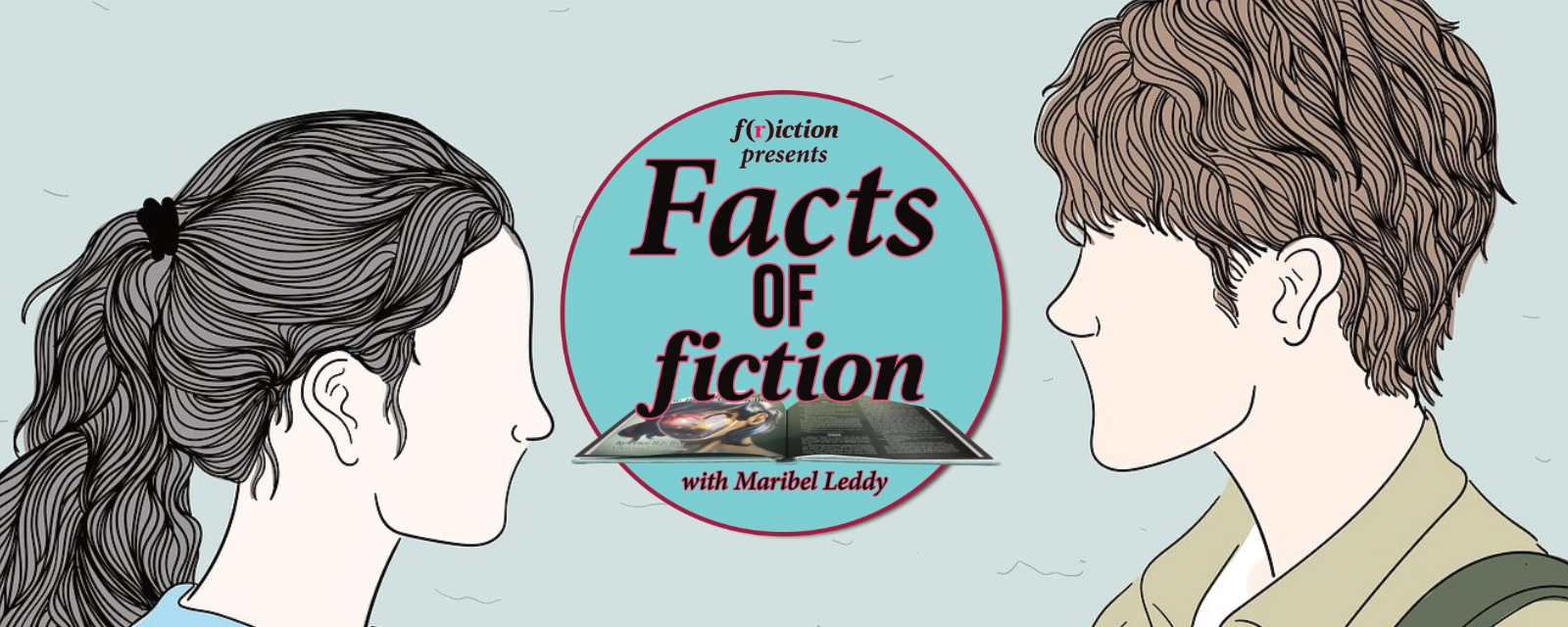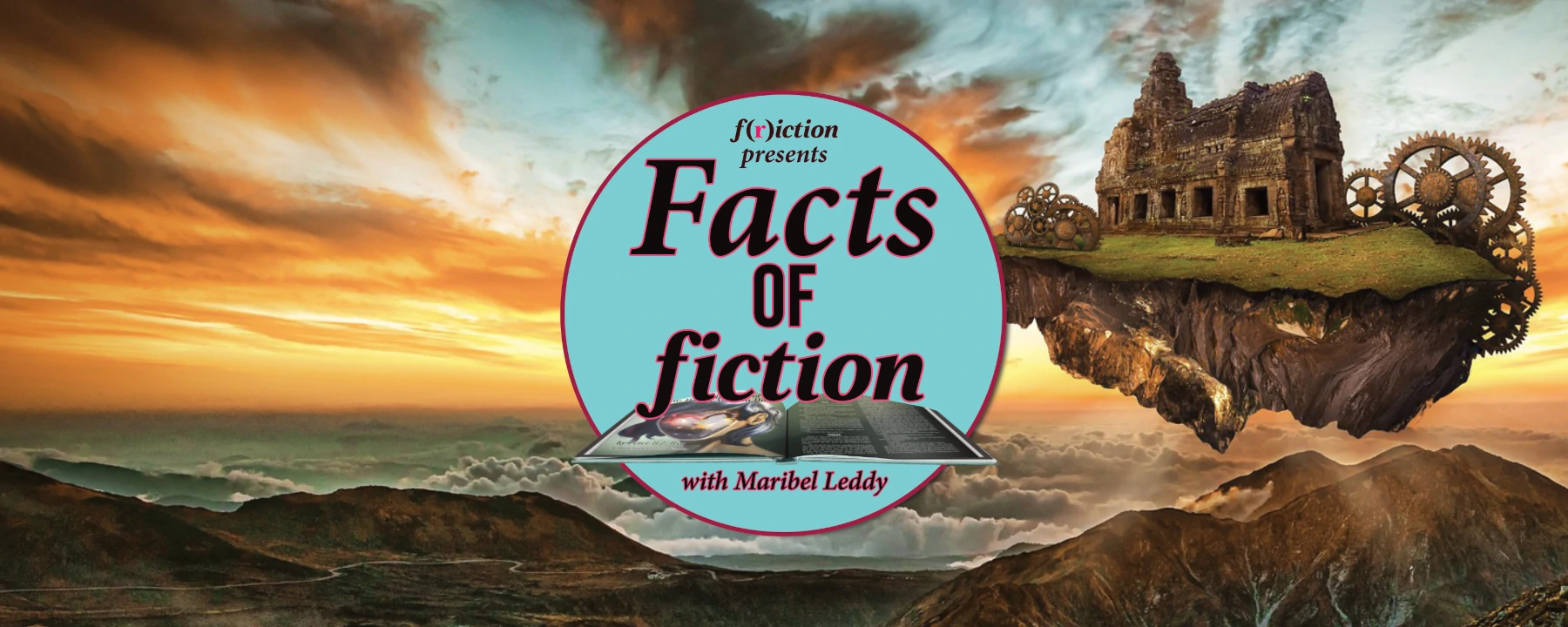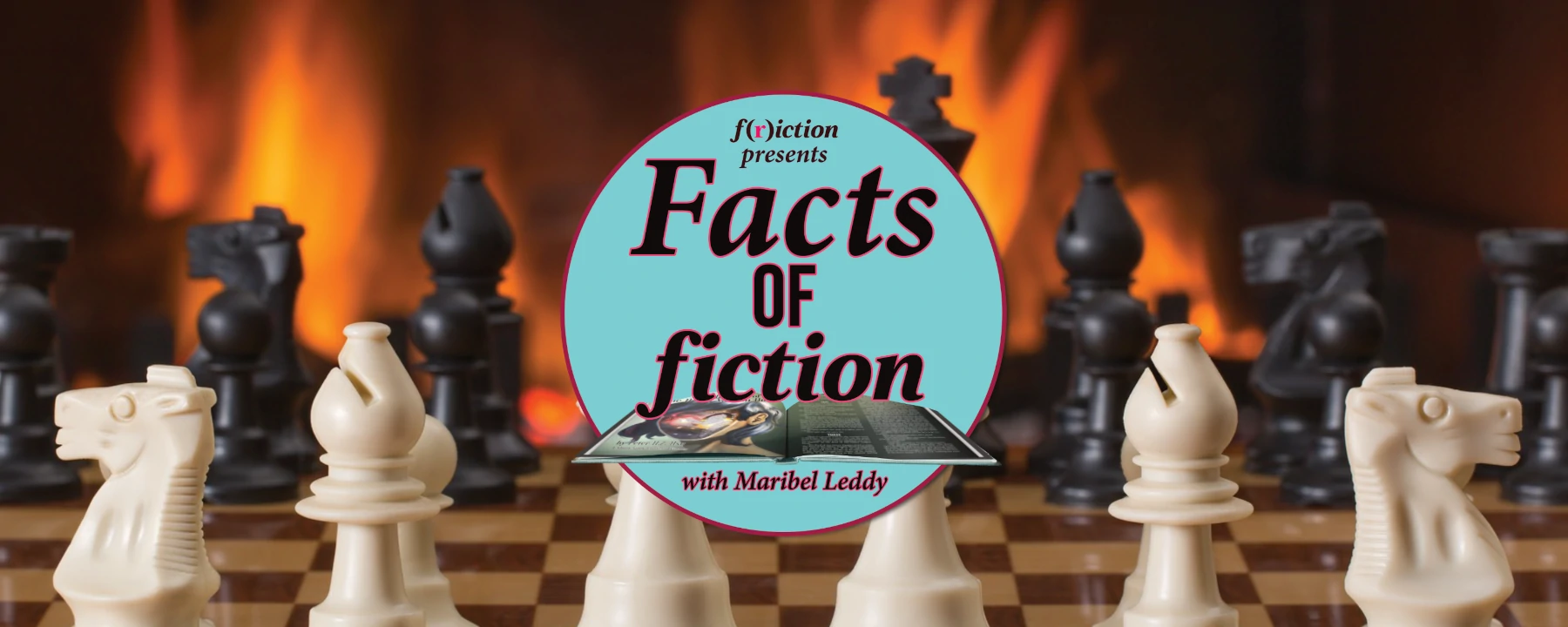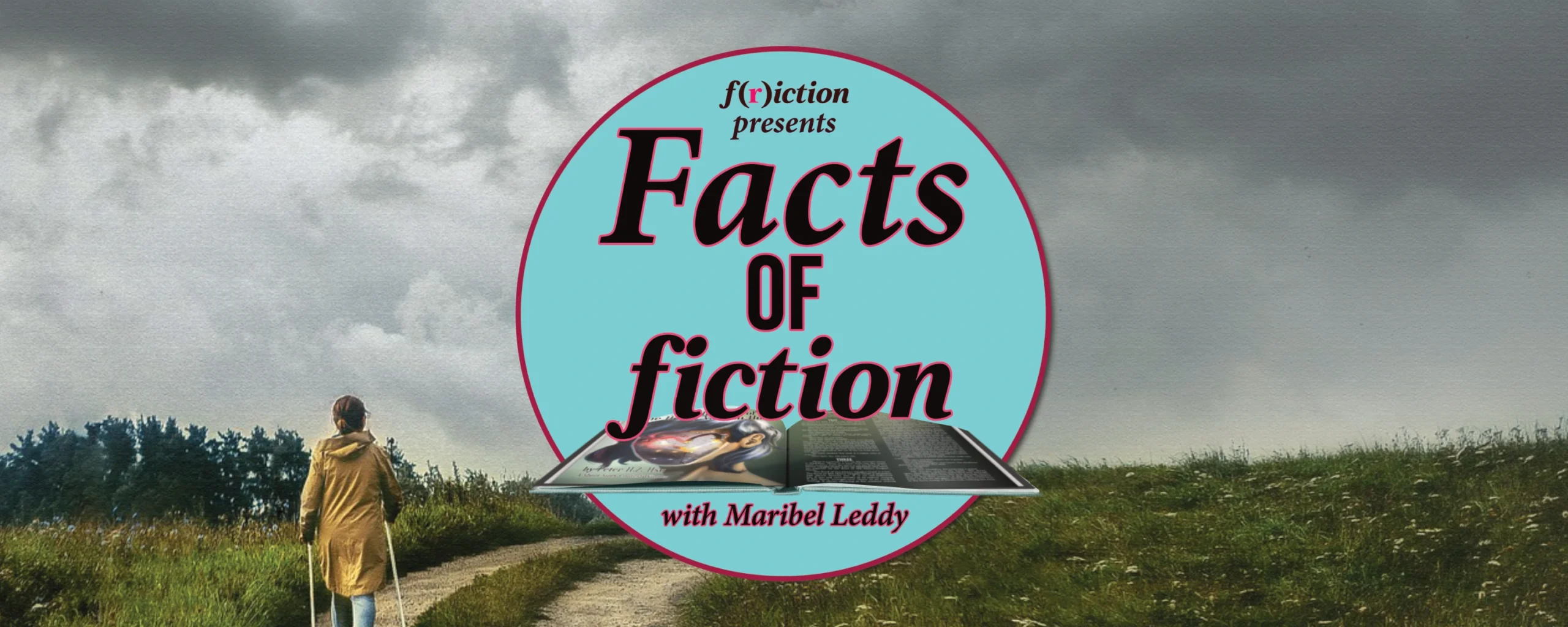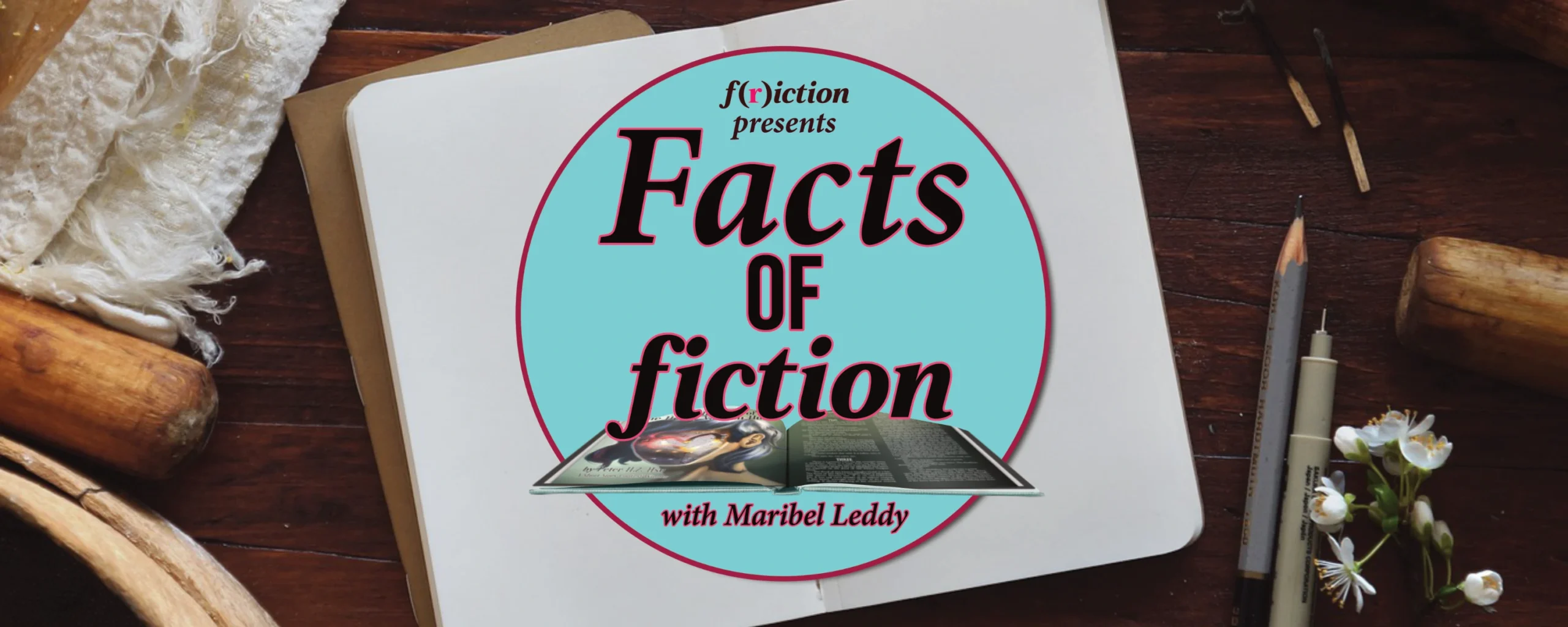Writers discuss how they tell stories from start to finish
Now that you know what a story is, it’s time to start writing your own! But how? For many, getting started actually writing a story can be the hardest part. That’s why we’ve asked some writers here at Brink to weigh in with insight into their own writing processes. From coming up with ideas to how they tackle editing and so much more, here’s what they had to say.
Q: How do you come up with ideas for the stories you write?
In Short:
Our writers recommend using inspiration from life all around you:
- Read a book.
- Listen to a song.
- Collect metaphorical language and turns of phrase.
- Eavesdrop on conversations in public.
- Talk with other creatives.
- Take inspiration from things that resonate with you online.
- Excavate and challenge accepted “truths.”
- Seek to preserve feelings or vibes.
Check out the full interview with members of the Brink/F(r)iction staff below for a deep dive into their tips on coming up with story ideas.
Valerie, Brink Education Program Manager and published author: My stories usually develop in two ways. There’s the lazy, fun way: I chase things in stories that capture my imagination and make me ask “What if?” I’ll read a book, or listen to a song that stays with me. If I’m thinking about alternative possibilities a few days or weeks later, it’s worth pursuing. I guess the teen fanfiction writer in me never died.
The second way is more methodical, and usually only works for short fiction and poetry: I collect metaphorical language and turns of phrase, and then make them as literal as possible. For example, my mom used to say she was “raised by wolves” to explain her chaotic upbringing. So, I wrote a story about how my grandmother was a literal wolf living in our house. It works great for fabulism and surrealism, but it rarely has enough of an engine to support a story over 3,000 words.
Maribel’s Note: That makes it perfect for flash fiction! Check out Brink’s flash fiction submission guidelines here.
Nate, Communications & Marketing Director and author of One Person Can’t Make a Difference: One of my favorite things to do is just hang out in a public space and overhear other people’s conversations. Lots of times, I’ll note something that I never would have thought, felt, or experienced, and start digging into a story. Otherwise, many ideas come from talking with other creatives, mixing up concepts, and seeing what happens.
Evan, Editorial Director and author of Shed the Midnight: They come from a lot of different sources. I tend to write strange things so I’m often playing the “What if…” game. Like what if a random pebble fell from the sky into my mouth? What if a boy went into a field and discovered he had claws? What if someone stole a suit coat from a thrift store and found human teeth in the pocket? That sort of thing. I’m on the lookout for that strange bit that excites me. I collect those types of things and write them all down, even if I can’t get to it right then.
Inanna, Fall 2023 Intern: I wish I had a proper process for coming up with ideas, but they just come to me! Sometimes when I’m on a bus, sometimes when I’m in the shower. I’m currently working on my first novel, and I actually saw the title I’m using for it online—it’s a song title—and came up with the entire plot based off of that. It felt very otherworldly.
Sara, Fall 2023 Intern: Most of my ideas for my poems and stories come from my refusal that the world will always be the way it is, and we have to accept it as such. To me, writing is a process of interrogation or manifesting magic where it might not otherwise be observed. One of my never-ending works-in-progress is a short story that satirizes the way the political, healthcare, and justice systems work in tandem to consume marginalized bodies. Another short story of mine flips the alien-invasion trope on its head to explore themes of colonization. I don’t think we should be forced to accept these things as necessary yet flawed parts of our humanity, and writing is my way of excavating and challenging these “truths.”
Aubrey, Fall 2023 Intern: For me, stories start as a desire to preserve a certain feeling or vibe. If it sticks in my mind for longer than a week, I’ll begin turning the sensation around in my mind. Sometimes it’s associated with a specific memory or idea and sometimes it’s not. The historical fiction novel I’m working on right now explores Japanese American identity in Hawaii, cultural memory across generations, and colonization. It started as a spark of grief and awe when I learned that my grandfather’s childhood nickname was “Cherry.”
Q: Do you have a set routine for where and when you write?
In Short:
- Try out a few different times of day and see what works best for you.
- Or maybe you’re the type to write whenever inspiration hits. If that’s the case, take Gina’s advice below and use the Notes app on your phone to jot down new ideas whenever and wherever they strike!
- Every writer’s routine is different.
Valerie: Unfortunately, I write best between the hours of 10 p.m. and 3 a.m. Midnight is the golden hour. I go to my office, light some incense, and write until I can’t keep my eyes open. I’m perpetually exhausted, and I do not recommend this approach.
Nate: My routine used to be to write for one to two hours after school or work each day, especially if I was working on something long form. I would put classic Twilight Zone episodes on Netflix for background noise, and just burrow into the world of the book. My favorite part of that routine was when, in wintertime, I would look up after two hours of work and see that the world had gone dark. These days, I don’t have a specific routine, but when I start a new project, I always fall into one.
Evan: I used to before I had kids. Now things are a bit more wild. But my preference is to write in the morning after I’ve read for about a half hour. That reading time is crucial. If I’m not reading I’m not writing. Now I steal time when I can.
Inanna: I wish! I’ve tried sticking to a routine before and that just does not work for my brain. I write whenever I’m in the mood. I’d like to try again to establish some sort of discipline though.
Gina, Junior Editor: I wish I could say I was organized enough to have a writing routine. I tend to be loose and follow inspiration when it hits. When it comes, it comes. Even in the middle of the night—thank goodness for the Notes app! I’m most consistent in writing where I’m comfortable: on my bed and writing late at night and way past my bedtime—from midnight to 2 a.m., for example.
There’s something to be said about the saying “write drunk, edit sober”—but in my mind, it’s a metaphor for, essentially, loose writing. (Drink responsibly, please!) Late at night, after a long day, when everyone else is asleep, my writing is more uninhibited than usual. I don’t overthink what I write because I’m exhausted. It’s easier for me to tap into the story and get into the “flow.” I remove myself from the equation and let the world and characters speak for themselves—I’m just writing down what I see. So, that’s what works best for me! Also, routine-wise, I have memory problems, so I use trackers to see my progress and pace. It’s fun to look back and see how far I’ve come. Or what problems I continue to make.
Sara: Setting up a consistent writing routine is one of my eternally unresolved New Year’s Resolution items! I do set aside at least half an hour to read everyday, which has been so helpful in my growth as a writer. I took an amazing poetry workshop with Jenny Qi, and learned that you don’t have to write poetry everyday to be a great poet—it certainly helps, but a lot of the work is subconscious, and discovering new poems to read and engaging with the world around you is just as important.
Aubrey: These days I try to write in the early mornings before work. Doing this during summer was very doable for me but since Daylight Savings ended, I’ve been struggling more and more (it’s too cold to leave my bed).
Q: What happens for you first: determining characters, plot, setting, theme, or other?
In Short:
- It happens in different ways for different writers.
- The important thing is, once you have a story, grab onto it and write it out as soon as you can so you don’t lose that thread of motivation.
Valerie: Usually a concept seed comes first. But then, because my longform fiction is voice-driven, I’ll free-write diary entries that channel a specific voice. That voice creates the character, the conflict, and the world.
Nate: I usually start with the theme. One of my books is about the disillusionment of late-20s/early-30s adulthood, another is about a gig worker who has to work just to literally recharge his synthetic body each week or he’ll die, another is about a future utopia and one person who selfishly brings back individualistic capitalism. When I know what a book is about thematically, then I start to imagine the world, the people in that world, their pasts, their legacies, and their individual motives.
Evan: For me it’s all about the characters and setting, which I guess equals situation? I don’t tend to know what characters are going to do before I start writing, but if I have an idea of who they are and where they are, the rest comes together. I know “situation” isn’t one of the options but that’s what I’ll go with.
Inanna: For me, my characters always have been and always will be the most important part of my stories. While I do sometimes come up with vague plots first, more often than not, I get ideas for characters, relationships, and/or character arcs and build my worlds around them. They are what’s important, so they are in control.
Sara: Typically, the theme or idea comes first; it’s usually something that’s been swimming in my head for weeks, and as soon as it comes to me more developed, I can’t focus on anything else until I get a first draft down! Otherwise, the characters come first. When I discovered the theme for the most recent cycle of Dually Noted was “When Memories Become Currency,” I immediately had this idea of an artist who hoards her memories like one would hoard money or property. I had been primarily writing poetry at that time, but as soon as that character came to me, I knew I had to write a prose piece about her before her story escaped me.
Aubrey: For me, characters and theme develop first and simultaneously. I also usually have a general sense of setting, but I don’t refine it until after I develop characters and theme. Plot typically comes last; I struggle with it the most.
Maribel’s Tip: The best way to get started writing is to just do it. Check out the “Exercise” at the bottom of this blog to put what you’ve learned to the paper!
Q: What does the outlining process look like for you?
In Short:
Whether you spend a lot of time outlining or very little, having some kind of structure for your story—whatever form that story takes—can help you write it. A few ways to help yourself do this:
- Stay tuned for upcoming additions to this blog series that specifically go over story structures, such as the Hero’s Journey, and outlining.
- Concentrate on one or more of these story essentials: character, setting, theme, and/or plot.
- Decide if you want a long, detailed outline or just a basic one.
- Remember that outlines are malleable and ever-changing—don’t be afraid to adjust it as you write!
Valerie: I was a diehard pantser for most of my life, but now I outline religiously. I write story beats on index cards. Each card answers two questions: what does the character want here, and why don’t they get it?
Nate: Once I have my theme, characters, and setting, I start plotting. My outlines are often a loose flow at first, just to get all the ideas and events out of my brain and onto the page. Then I refine the outline, identify the themes of each chapter or section, and cut or alter scenes and moments. Then I test the whole thing for flow and consistency, and revise. Even when I’m writing the draft, I will reference my outline while also changing it whenever characters say things or take actions I didn’t anticipate that require altering the course.
Evan: For longer projects I tend to work toward images. I know I want a random static-y TV set in the forest. Or I know I want a sunbather to be approached by a man made out of hooks. But how we get there is always interesting. I wouldn’t recommend this process because it leads to a lot of rewriting and removal of scenes, but part of the joy for me is the discovery along the way.
Inanna: For me, the outlining process is very messy and very long. I don’t like starting anything unless I think I know every single thing that’s going to happen from beginning to end. I have google docs that I call “messy outlines” and go wild in there, dropping screenshots from conversations and bits and pieces of ideas until I can make something coherent. Outlining is the best part for me!
Sara: For poetry, it is incredibly messy—picture scattered bits of paper scribbled with incomprehensible notes or transcribed phrases from my phone’s Notes app. I prefer writing first drafts by hand, so I’ll stitch all those messy thoughts together in a notebook, or if I’m really struggling, cut phrases out with scissors and glue them on the page until I’m satisfied. Between the first draft and revision, I like to take a long break; I find that grounding myself back in the real world and letting my ideas settle over time helps me refine what I really want readers to take away from a poem.
Aubrey: My outlining process is Virgo chaos. I have a really hard time writing when I don’t know where I’m going, so I need to have a solid outline before I can write anything. Characters, scenes, and bits of world float around in a nebulous haze as I figure out my theme. Then, when I’ve marinated a story for long enough I’ll try to fit everything into a preexisting plot structure (Three Act or Kishotenketsu) just to get a semblance of pacing. From there, I develop the first act then draft, then rinse and repeat with the next act and the next act until I have an outline and a finished draft.
Maribel’s Note: What’s a “pantser,” you may ask? The Write Practice outlines the three different kinds of writers here, but essentially, a panster writes without a plan, a plotter works from an outline, and a plantser does a little bit of both. All three ways are valid, especially when you’re first starting out, but at some point it does become useful to have an outline of your work—particularly if it’s longer, like a novel.
Q: To you, what makes a good story?
In Short:
Great stories tend to have these three things in common:
- They stay with you after reading.
- They have strong characters.
- They feel both inevitable and surprising.
Below, our writers expand on what this means and why these things lend themselves to great stories.
Valerie: A good story stays with you. From a craft perspective, that means that the reader needs to be invited into the story experience enough that they are personally invested in the outcome.
Nate: I think if a story sticks with you after you finish reading it, it has succeeded. There are a lot of books written with differing levels of difficulty, vocabulary, and allusions, but when you step away from it feeling something, that’s the success. I’ve mourned the end of my time with characters. I’ve wanted to reread a story hoping it would end differently. I’ve spent days and weeks feeling personally changed by a story. That’s the success right there. That’s all I ever hope to do for a reader when I write.
Evan: I like to be engaged emotionally and intellectually, which can take many forms. I like experimental work if there’s a reason behind the experimentation, or better, the story is best told that way. I also love pretty writing and if there’s strong images and beautiful language I’ll be hooked. There are so many ways to tell a story and I generally am drawn to situations and characters I haven’t read before. I love to read work in translation, and I read a lot of new poetry. If I feel like I understand the world the author has put me in and that the author is in control of where we’re going that’s normally enough to keep me reading. If the ending is perfect after looking back at the whole story then I’ll be in love.
Inanna: Characters are what make the story. There is no such thing as a good story without strong, well-developed characters. It doesn’t matter how good the plot or the idea is. If there aren’t good characters to follow, I won’t care about it.
Gina: Character, no question. As humans, I think we connect with others’ stories and find that social connection is key—regardless of what species the characters are, or if they’re sentient at all. I need a good character to latch onto, whether it’s apparent through the story’s voice, the character’s actions, dialogue, or more. Thankfully there are so many ways to establish character. Characters are the most important story element to me because other story elements usually follow them—plot happens to or because of a character or is connected to a character in some way, for example—so character(s) take the lead. Establishing compelling characters early on and giving readers a reason to care about them, generally by showing a bit of vulnerability and/or showing their motivations, is, to me, the best way to keep readers coming back for more.
Sara: I took a class on the Latin American Short Story, and my professor suggested that a successful short story ending should feel shocking, yet inevitable. I haven’t been able to get this idea out of my head ever since! In my favorite short stories, every word counts, or hints at its inevitable ending. For longer pieces, like novels, I still really admire elements of surprise or horror, but I also enjoy feeling connected to a character. My favorite novels have all left me feeling sad that I have to leave its world and characters behind, longing for the opportunity to read it for the first time again. For novels, short stories, and poetry alike, I adore works that haunt like a ghost and linger in my head for days, or even weeks, on end.
Aubrey: In writing, I think it’s the sincere desire to explore. In reading, I think it’s anything that stretches the way you think or feel, whether that’s changing your world view or making you feel a delight that you didn’t know you had in you.
Q: What approach do you take to editing your work?
In Short:
No matter how you approach editing, it is an essential part of the writing process. After you have a first draft, the majority of the rest of your time will likely be spent editing. You can:
- Utilize other readers to help you make edits.
- Tackle it yourself slowly over time.
- Employ other tools to help you edit your work.
Valerie: I’m a huge fan of shitty first drafts. Write a flaming pile of garbage, and then edit it toward your intentions. Editing is more important than drafting, but you can’t edit unless you draft. I’d say I spend 85% of my writing time editing.
Nate: The main things I utilize for editing are time and trusted readers. To avoid being precious about my work, I have friends who will read for me and tell me straight to cut a paragraph, a page, a chapter. It’s never fun to hear, but I always listen because my readers get what I’m trying to accomplish and have the distance to look at the work objectively. Time is the other key. I will usually set a book aside for one month after I finish a first draft. Then I can go back and read it almost anew, see the holes, find the places where the bones need more meat, and see where there’s excess.
Evan: I write and rewrite and rewrite. My normal process looks like this: Write the bones of a scene. Go back now that I know what I’m writing about and flesh out that scene. Go through again and add more. Put in too much and cut some out. Realize the story doesn’t need that scene and put it into a different folder.
Inanna: This is something else I’m working on right now. I used to micromanage every little sentence as I wrote, editing things before and after writing sessions over and over again. It was a hellish loop. Now I’m trying to just write and ignore what’s been previously written, and add new ideas or portions to separate docs. That way if I have an idea, that’s fine, but I won’t go back to what I’ve already written and get stuck in another loop.
Sara: For poetry, it’s incredibly helpful for me to switch mediums between each revision. For example, if the first draft was hand-written, the next revision needs to happen on my laptop or typewriter. That way, it’s easy for my brain to catch any phrases that sound awkward or unpolished. I took a life-changing screenwriting workshop with Josefina López, and she said this is especially important for freewriting, because handwriting your first draft allows you to access your subconscious in a way that typing can’t. Reading your work aloud is also helpful, especially for poetry, where a piece’s musicality and sound can inform the poem’s content. Most importantly, I try to give myself a lot of space and compassion in between revisions. I can easily get consumed by my own ideas or (sometimes harsh) expectations, so forcing myself to take my time is essential.
Aubrey: I like to edit while drafting. I wrote a shitty draft for NaNoWriMo once, and then when I went back to edit the thing, I got so overwhelmed by its mess that I quit and felt horrible. Nowadays, I start a writing session by lightly editing the chapter once before going back to drafting. If I feel like my words are workable on a line level, it makes the developmental edit much more digestible for me.
Q: How do you know when a story is finished?
In Short:
- There’s no formula for this one.
- Usually it’s just a feeling, and that feeling isn’t always correct—that’s what editing is for!
Valerie: I’ll let you know when I figure it out.
Nate: It’s weird. It’s a feeling. And it doesn’t always happen. I have had stories and books in which the final page feels so perfectly final. I’ll type that last sentence and feel complete. Other times, I’ll simply run out of momentum—not giving up on the story, but more that the story winds down in a way that feels less under my direct control. What’s funny is that neither case means the work is inherently good or that the feeling is correct, but I always chase that “perfectly final feeling.”
Evan: With shorter projects I’m looking for a moment when the narrator or main character makes a choice they can’t come back from, even if it’s small. Once I’m there it’s almost the end. Then I want that choice demonstrated through action. Once I know the end then I can go back to the beginning and plant all the little bits that make the ending resonant. At least that’s the hope. I’m a tinkerer by nature. I’ll keep messing with a story long after it’s reasonable, which is part of why I submit so much. Once I’m done, I give it another read and send it off and then start on the next one.
Inanna: To me, a story is finished when I can put my book down, smile, and say, “wow,” whether it’s one of the short stories I wrote or a novel I read. You get this feeling of emptiness because it’s over, but you still feel full because, well, it’s over.
Sara: My gut instinct is to say that I rely on my gut instinct, especially for poetry, but that’s not a very helpful answer! I think getting an outside perspective has been incredibly helpful for me, whether that’s sharing drafts with my partner or in my writing groups. I love to ask what people think my story or poem is about, or what main idea they’re left with after reading. Everyone will take away something new and different, but if no one picks up on the main themes or ideas that motivated a piece, I know I have more work to do.
Aubrey: I usually know a story is finished when I read it through and the vibes feel good (no nitpicks about pacing, description, or voice).
Q: If you had to choose just one thing that is the most essential to your writing process, what would it be?
In Short:
Our writers find that their best tips for navigating the writing process is to ensure you:
- Feel excited by the story.
- Have life experience.
- Read, read, read.
- Use a timer.
- Remind yourself why you write.
- Listen to music.
Valerie: So, my partner does this thing where he laughs at his own jokes before he tells them. I know it’s going to be a good joke when he laughs so hard he can’t even tell it. It’s adorable. I try to approach my writing that way. If I’m not excited, on the edge of my seat, cringing with the character, or laughing at my own jokes, it’s not working.
Nate: Life experience. I mentioned eavesdropping for story ideas. The other good thing for stories and books is seeing the world, living outside your bubble, and doing things that make you a little uncomfortable. I’m not talking about thrill-seeking or abject hedonism, just that, as one of the best ways to know how to write a break up is to love and lose, the best way to write a feeling of exploration and curiosity is to go out and do it. Living life inspires living fiction and I believe that the best books and stories are the ones that feel honestly and truly alive.
Evan: Reading. I know when my writing is feeling stagnant or if I’m stuck somewhere it’s nearly always because I’m not reading as much (or as well) as I should. I have writing buddies who will ask me specifically if I’m reading something good when I’m stuck and the answer is always no. Then it’s time to head to the library.
Inanna: A timer, through and through. Oftentimes, knowing that there is a stopping point is the only thing that helps me get started.
Sara: I struggle with severe imposter syndrome, so what’s been most essential is to remind myself of why I write. I write because I enjoy it, I write to understand myself and the world around me, and I write to make others feel less alone. Literature provided me with so much solace when I was a teenager, and I want to extend that to others who may have similarly struggled. I often remind myself that if just one person reads my work and feels seen, understood, or less alone, then that is all that matters.
Aubrey: Music. Like a lot of writers, I like to make playlists that fit the vibes of the piece I’m writing! It helps me to relax and makes it easier for me to get into a flow state.
Ready to tell your story?
When it comes to writing, there’s no one set process or starting point that will always work, 100 percent of the time. Every writer is different and so every process is different. But you can use the insights and tips above from our writers for ideas on how you might try to get started writing your stories—whether that means timing writing sessions, staying up late to make the most of your creative juices, or joining a writing group to get edits and inspiration. Ultimately, we recommend starting here—learning about what stories are and tackling monthly exercises with us as you commence your writer’s journey.
Exercise
For the next week, spend 20 to 30 minutes each day keeping a journal. You can write about your previous day, envision the day ahead, jot down ideas stuck in your mind, share opinions, recall a conversation you overheard on the bus, or anything you feel like writing about. On the final day, look back at what you’ve written and see if there’s a story somewhere in there.





